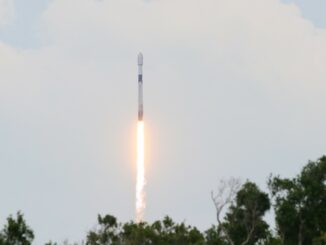
Orbital ATK’s Antares rocket will deliver a Cygnus supply ship into orbit Monday to begin a three-day pursuit of the International Space Station.
The rocket’s two RD-181 engines will ignite around 3.7 seconds before liftoff from pad 0A at the Mid-Atlantic Regional Spaceport, a complex owned by the state of Virginia at NASA’s Wallops Flight Facility.
Launch is timed for 4:39 a.m. EDT (0839 GMT) Monday.
The first stage’s two RD-181 engines will power up to 864,000 pounds of thrust and burn for 3 minutes, 35 seconds, to accelerate the rocket to more than 8,750 mph (3.9 kilometers per second) and an altitude of around 61 miles (99 kilometers), then separate from the upper stage’s Castor 30XL motor about six seconds later.
The launch, known as OA-9 in Orbital ATK’s station resupply manifest, will be the third Antares mission using new, more powerful RD-181 engines, which the company ordered from the Russian engine-builder NPO Energomash to replace decades-old Russian-built AJ26 engines blamed for an Antares rocket crash seconds after liftoff in October 2014.
Once the first stage finished its job on the OA-8 launch the Antares rocket’s 12.8-foot-diameter (3.9-meter) diameter payload shroud will jettison in two halves at around T+plus 4 minutes, 11 seconds. An interstage adapter that connected the first and second stages will separate at T+plus 4 minutes, 16 seconds.
The launcher’s Castor 30XL solid-fueled upper stage will ignite at T+plus 4 minutes, 24 seconds, and generate up to 104,300 pounds of thrust during a burn lasting approximately 2 minutes, 42 seconds. The second stage motor will burn out at approximately T+plus 7 minutes, 6 seconds, then deploy the Cygnus spacecraft at around T+plus 9 minutes, 6 seconds.
The spacecraft’s two cymbal-shaped electricity-generating solar arrays will unfurl in a fan-like motion around 90 minutes into the mission, and the ship’s thrusters will begin fine-tuning its approach to the space station with a series of course-correction burns Tuesday and Wednesday, setting up for a laser-guided final approach Thursday.
Email the author.
Follow Stephen Clark on Twitter: @StephenClark1.



